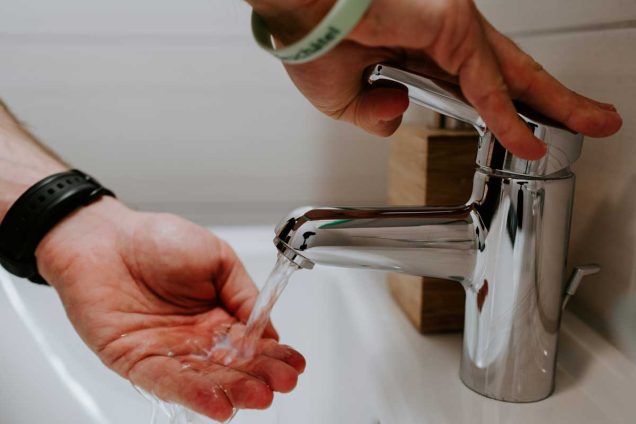Before you know it, the sun will be out late into the night, and temperatures will be in the 80s and 90s. Unfortunately, this also means there will be summer droughts and low water levels in your well. A well going dry is unnerving, but there are many ways you can minimize water usage to make it through these spells.
Here are some basic approaches to dealing with your well water supply during a summer drought and how you can practice more efficient water conservation.
Summer Drought and Your Well
Aquifer levels often experience seasonal declines in summer, which is the peak time for plant growth. In the summer, underground aquifers are used by plants for growth and people for irrigation. We need to make sure we’re not overusing these aquifers, or else it could lead to irreversible environmental problems.
More severe aquifer depletion can also follow on the heels of drier winters. Years with lower snowmelt recharge and generally less precipitation are likely to see unfilled aquifers.
Unfortunately, drought can affect your well water access in the summer, and many symptoms can indicate a low well. For starters and most obviously, high usage will lead to low water levels. If you stick to only using the amount needed for showers, cleaning clothes, doing the dishes, and conducting regular tasks, you should be okay. However, other signs of a dry well may include increased air or more sediment in the water supply, a pump running longer than usual or cycling more frequently, or extended intervals before adequate pressure builds up.
Of course, these things don’t necessarily mean a dry well. Instead, they might indicate faulty equipment – a malfunctioning or tapped-out submersible pump, for example – or leaks. So, get a well specialist to assess your system to determine the ultimate cause.
Conserving Well Water During Summer Dry Periods
Many simple practices can help you conserve water during summer droughts. Here are some simple steps to save water if your well is running dry.
1. Watering Lawn & Garden
Lawn care is a significant water suck in the summer. Use the sprinkler less during dry spells to save a lot of water. Even if you don’t completely stop watering, keep your turf in “survival mode” with just a little bit of water. In the summer heat, watering in the early morning or evening is more efficient than midday. Using the sprinkler in the heat of the day means a lot of that water gets rapidly evaporated off, and your grass doesn’t even soak it in.
If you can’t reduce your water usage on the lawn, you can reuse it! Collect rainwater or save drain water from the kitchen to keep your garden or lawn healthy.
2. Identify & Fix Leaks
Leaking fixtures can be extremely draining on your water supply. Leaky faucets or toilets can translate to hundreds of gallons of water lost per day. Check for leaks and remedy them immediately – it’s all the more important during dry spells.
3. Install Water-Efficient Appliances & Fixtures
From low-volume showerheads and faucets to low-flush toilets and water-efficient dishwashers, water-saving upgrades in your home can pay off big time during summer droughts. When purchasing appliances, check that they are Energy Star certified.
4. Store Bottled Water in the Fridge
Rather than run the tap waiting for it to get cold, keep bottles of water in the refrigerator for when you need a cool, refreshing drink. You can fill a bunch of bottles at once, and they’ll be ready for the whole week.
5. Connect With Your Neighbors With Wells
If your neighbors also rely on well water, it’s a good idea to touch base with them during major dry spells so you can coordinate your well water conservation. That includes trying to schedule and stagger competing water needs.
6. At the Bathroom Sink
Use a glass of water to rinse after tooth brushing rather than a running faucet. Consider brushing your teeth while you’re running water to get it hot ahead of a morning shave.
7. Toilet Flushing
We’ll use some discretion here, but in many cases you don’t need to flush your toilet every time for liquid waste. The “if it’s yellow, let it mellow” approach can save you an awful lot of well water. Also, strained-out kitchen drain water can be used to help recharge your toilet reservoir. We noted this tip last because it’s usually only used in emergency well situations.
Turn to Greco & Haines for Help With Summertime Well Issues
Whether it’s evaluating whether your well is running dry or experiencing technical malfunctions, or addressing the long-term impacts of a drawn-down aquifer, look no further than Greco & Haines for all of your well water needs this summer.
Keep in mind some other maintenance issues may come up in the summer, including a well water pump installation or pump motor burnout from cracked pipes and heat expansion. In addition, regular testing of your well output and drawdown rate helps you stay on top of broader aquifer patterns. Upgrading the size or number of your storage tanks can be another technique to handle dry spells.With these and all other well system issues and upgrades, the best well water company in CT is here to assist. Greco & Haines offers service 365 days a year – with no extra charge for weekends and holidays! For more information about our well water services in CT, contact us today via our online contact form or call any time! 203-735-9308 or 203-777-2256 or Call Toll-Free from any CT Area Code 1-800-922-2958.

